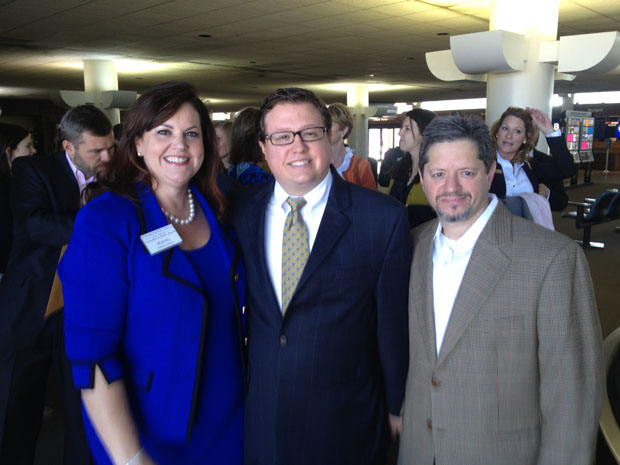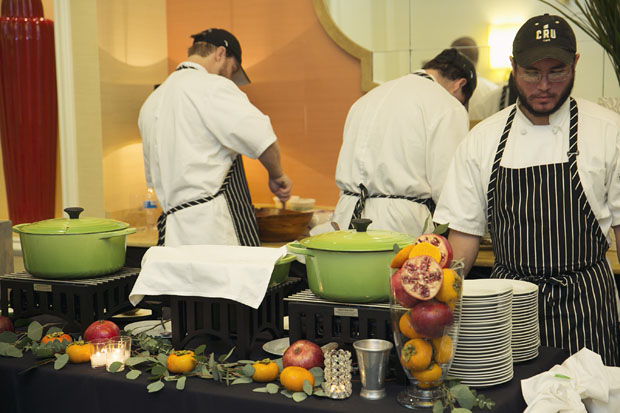Our Special Place
15 Jan 2016
Charleston CVB director makes Holy City shine on national stage
By HOLLY FISHER

If you want to know if Helen Hill has been successful in her 30 years with the Charleston Area Convention & Visitors Bureau, just look at the numbers. Each year nearly 5 million people visit the Charleston area, resulting in job earnings of $1.23 billion and a regional economic impact of $3 billion.
And then there are the accolades: Charleston was honored as the No. 1 Small U.S. City for the fifth consecutive year in the Condè Nast Traveler 2015 Readers' Choice Awards. Travel + Leisure readers selected Charleston as the No. 1 city in the United States and Canada for the third consecutive year. Charleston also was ranked the No. 2 city on the list of Top 10 Cities in the World in the same readers’ poll.
Bringing that kind of notoriety and acclaim to the Holy City is Hill’s job as chief executive officer of the Charleston CVB.
“The opportunity to sell Charleston is really an honor,” Hill said. “We’re the front door of the community.”
Hill, who grew up in Charleston, joined the Charleston Area CVB right after she graduated from Clemson University. She started as the sales manager and then moved to the role of marketing director. In 1989, Hill was named acting executive director and then executive director, putting her in charge during one of Charleston’s more challenging times: Hurricane Hugo.
Regional Collaboration
Charleston – and Hill – weathered that storm. And since then, Hill has grown the Charleston Area CVB to put Charleston into the international spotlight as a tourism destination. Each year, visitors fill the hotels, attractions, restaurants and shops of downtown Charleston and the surrounding areas.
Hill said fortunately regional governments and elected leaders of the nine area municipalities are willing to work together to promote the Charleston area to visitors – an effort that gives the local economy quite a boost.
“Tourism is the first step in economic development,” Hill said. “Whether someone is looking for a second home or looking for a place to headquarter their high-tech company, they are a visitor to our community first.”
It’s one of the reasons the Charleston CVB has been so involved in promoting better local air service, working to make airfare more accessible and affordable. Without good air service, Charleston is destined to be a driving destination. That’s not necessarily bad, Hill said, but it is limiting.
Thanks to regional teamwork, Charleston now has direct access to cities like New York, Boston, Seattle and Washington, D.C. That not only benefits the 60 percent of visitors who travel through the Charleston International Airport but also people who live in Charleston who want to travel or telecommute.
“The amount of air service for a community our size is unheard of,” Hill said.
She points to Southwest Airlines’ expansion, adding flights to Dallas, Texas and Denver, Colorado. Jet Blue added more flights to Boston and Washington, D.C., along with a daily flight to Fort Lauderdale, Florida. In November, Alaska Airlines started direct, non-stop transcontinental flights between Seattle-Tacoma International Airport and Charleston International Airport. That airline addition came about largely because of Boeing’s significant presence in Charleston, but also will provide access for Seattle area visitors looking to come south.
“Boeing got us in the door,” Hill said. “That’s a good example of how the tourism industry is part of the bigger economy.”
A Full Year Ahead
As Hill looks at 2016, she’s excited about what’s in store for the Lowcountry. The new Gaillard Center is an asset to Charleston’s flourishing arts and culture scene. The Volvo Cars Open – previously the Family Circle Cup – on Daniel Island will bring a new level of excitement to the annual women’s tennis tournament, Hill said.
The Southeastern Wildlife Exposition – the kickoff to the season – welcomes the return of well-known zookeeper Jack Hanna. Of course, there’s the Spoleto Festival’s much-heralded production of “Porgy and Bess” plus the Charleston Wine + Food Festival in March – events that not only appeal to locals but bring in plenty of visitors.
Charleston’s festival scene is a large part of the tourism industry, but certainly doesn’t overshadow the incredible attractions and offerings available year-round.
“Everyone likes to talk about the festivals, but Charleston is a pretty exciting destination 365 days a year,” Hill said, noting the plantations, Patriots Point, shopping, beach and golf as key attraction assets.
Sporting events are on the rise for the area as well. Last year, PGA of America announced it would return to Kiawah Island Golf Resort for the 2021 PGA Championship. In addition, the United States Golf Association Women’s Open will occur in 2019.
The removal of the Confederate flag from the Statehouse grounds also opens up the door to new sporting events. The NAACP ended its 15-year economic boycott of South Carolina. The NCAA observed that boycott, refusing to allow the state to host any basketball championship games. With the boycott lifted, Hill said Charleston already has two bids out to host future games.
Marketing Charleston
People may come for food festivals, art and culture and sports, but it’s the area’s history that is her best asset.
“The No. 1 reason people come is history, history, history,” Hill said. “It’s the sense of place. There’s not another Charleston.”
Coming in at a close second is food. In the last decade, Charleston’s restaurant scene has exploded with chefs of celebrity status and a dining scene that rivals any major metropolitan city. Visitors also love the beach, the shopping and cultural amenities.
It’s that level of variety that makes the area so appealing – largely thanks to the efforts of the Charleston CVB. The team takes a measured, long-term approach in its marketing strategy, determining the best visitors to attract and making sure marketing images and advertising accurately reflect the destination.
Hill said the CVB has been deliberate in marketing Charleston as an added-value destination, not a discount destination. That’s one reason Charleston visitors spend more – $790 per adult per trip – than visitors to other destinations.
Finding That Special Place
And yet all the awards, glowing reviews and picturesque images of Rainbow Row can be overshadowed by tragedy and trials – something Charleston experienced several times over the course of 2015. The region seemed to constantly be making national headlines – and not for its achievements as a top visitor destination.
First, there was the fatal shooting of Walter Scott by a North Charleston police officer in April. Then in June, the nation mourned with the city after nine people were killed at Mother Emanuel AME. Historic flooding in early October prompted the CVB to ramp up its marketing to let people know Charleston was open and ready to receive visitors.
“The notoriety of being the No. 1 destination cuts both ways,” Hill said. “People know more about you when things go bad.”
For Hill, watching the community’s response after the shooting at Emanuel AME was one of the most rewarding parts of her career.
In the aftermath of the shooting, Hill worried, “Does our great staff oversell what we can deliver as a community?” But as she watched the way the community, the victims’ families and area’s leadership reacted in the days following the tragedy, she knew the answer to that question was “no.”
“There was a real sense that we are the special place we say we are,” Hill said. “We really are a special place with special people.”











